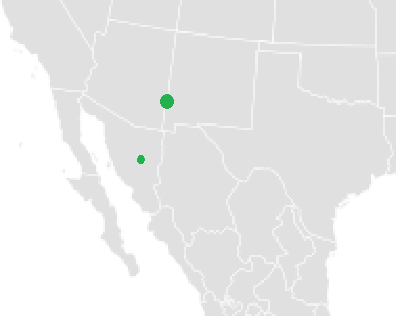 |
| Mexican wolf running in captivity |
A federal judge has recently castigated the
U.S Fish and Wildlife Service for not doing enough to guarantee there is a reasonable
Mexican wolf population in
Arizona and
New Mexico.
U.S District Court Judge Jennifer Zipps, in a 44-page judgment, noted frequent situations where the agency ignored the advice of "leading wolf scientists" in ratifying its own recovery plan. She further added that the agency's officials behaved in an "arbitrary and capricious" manner in deciding what to do. As part of the ruling, Judge Zipps indicated that the
Endangered Species Act of 1976 shows the Congress' desire to stop and reverse the direction toward species extinction, "whatever the cost." In addition, the law wants federal agencies "to use all methods and procedures which are necessary to bring any
endangered species or
threatened species to the point at which measures provided by the Endangered Species Act are no longer necessary." Judge Zipps also added that the Fish and Wildlife Service must regard "the long-term viability of the species," observing recovery needs and that the agency "must determine recovery based on the viability of species, not in captivity but in the wild." Judge Zipps touched on the goal to have 300 to 325 wolves in an area almost 154,000 square miles, comprising both Arizona and New Mexico south of
Interstate 40. However, in 2014, the Fish and Wildlife Service admitted that the experimental wolf population was not flourishing which Judge Zipps pointed out was due to illegal takings, pup mortality, authorized eliminations of wolves having an impact on
livestock, and hunting resulting in less
genetic diversity. She further criticized the agency for restricting the wolves' range to south of Interstate 40, even though the agency admitted that the area north of the highway "will likely be required for future recovery and recognized the importance of natural dispersal and expanding the species' range." The bottom line is that the recovery plan is unlikely to succeed in
producing a reasonable population of Mexican wolves and Judge Zipps was
not willing to depend on promises of future actions "that may never be
implemented." She also refused arguments that any plan developed by the
Fish and Wildlife Service should be the result of some kind of
compromise with both Arizona and private individuals who have debated
for a less aggressive plan for
wolf reintroduction and conservation.
In addition, she added that while the agency is supposed to discuss
with affected parties, the law requires the Fish and Wildlife Service
should "retain the authority and management flexibility to issue
regulations that further the
conservation
of the species." The agency has been ordered to return to court in 30
days and provide Judge Zipps a due date of when it will have an
improved--and legally acceptable--plan.
 |
| Range map of the Mexican wolf |
I find this court ruling of the U.S Fish and Wildlife Service's Mexican wolf recovery plan to be of significant importance because it clearly highlights the mistakes the agency made in its attempt to save the wolves from the brink of extinction. Rather than take advice from well-known scientists specializing in wolves, the Fish and Wildlife Service came up with its own plan which did not result in having 300-325 wolves in Arizona and New Mexico. Instead, it resulted in less genetic diversity of the experimental wolf population, due to threats such as hunting, "lawful" elimination of wolves that were threatening livestock, smaller litter sizes, lower birth weights, higher rates of pup mortality, and decrease in disease resistance. I believe it is highly essential that the U.S Fish and Wildlife Service should form and maintain tight partnerships with scientists, researchers, and
conservation groups that specialize in conservation of Mexican wolves and other endangered species in the country. The Mexican wolf is on the precipice of extinction with only around 143 animals remaining in the wild and 240 in
captive breeding programs. The only way to save this wolf from extinction is through a joint partnership between federal agencies and conservation groups. This means agencies like the U.S Fish and Wildlife Service should take advice from members of conservation organizations like
Earthjustice, the
Center for Biological Diversity,
Defenders of Wildlife, etc.
View article here



